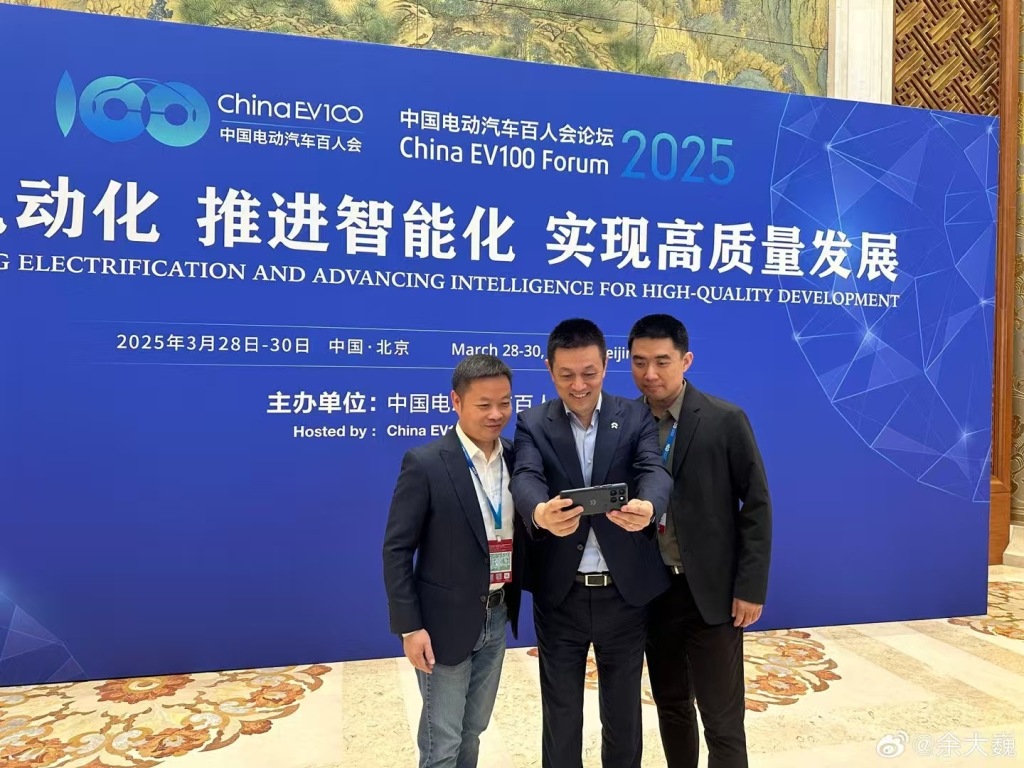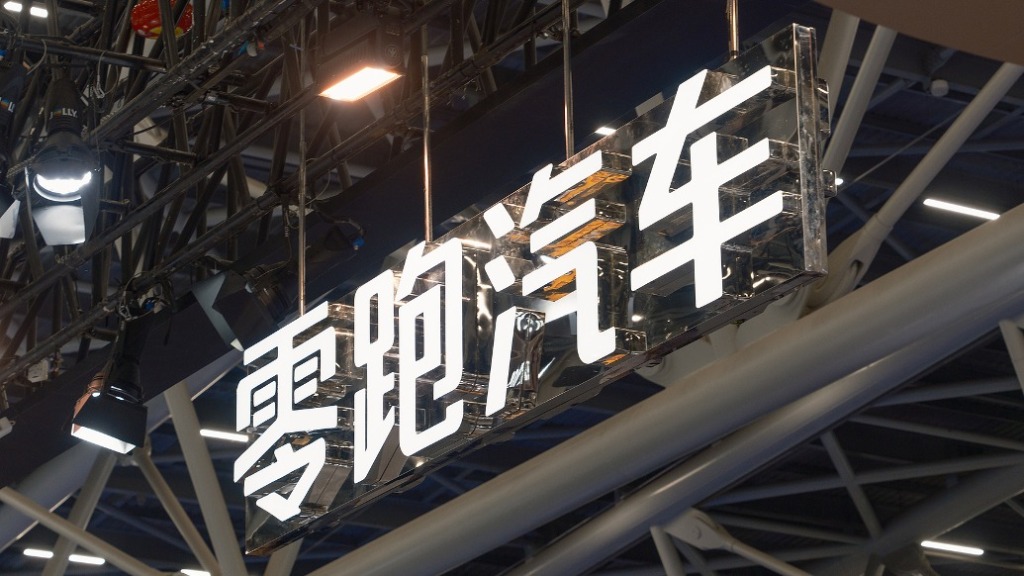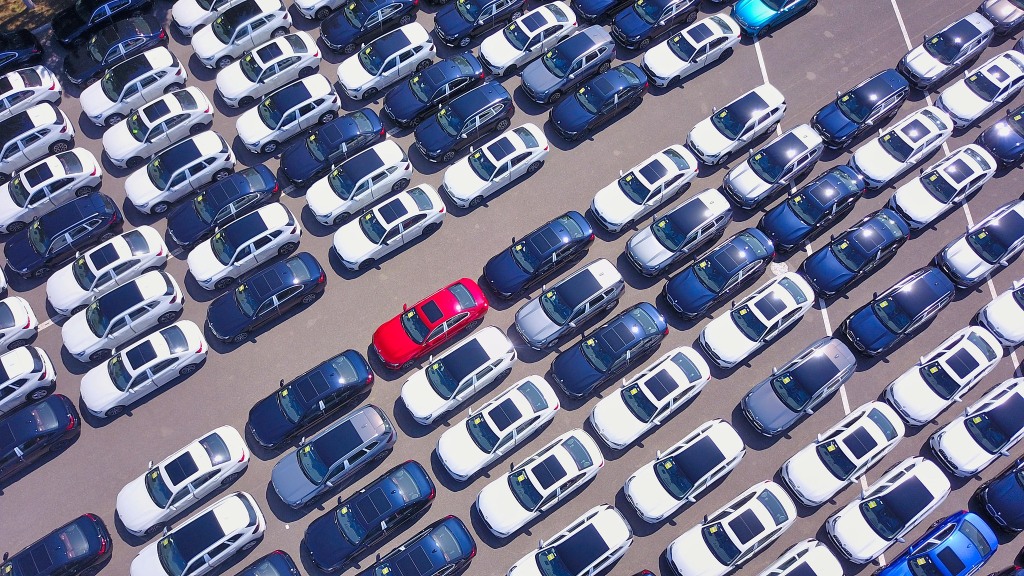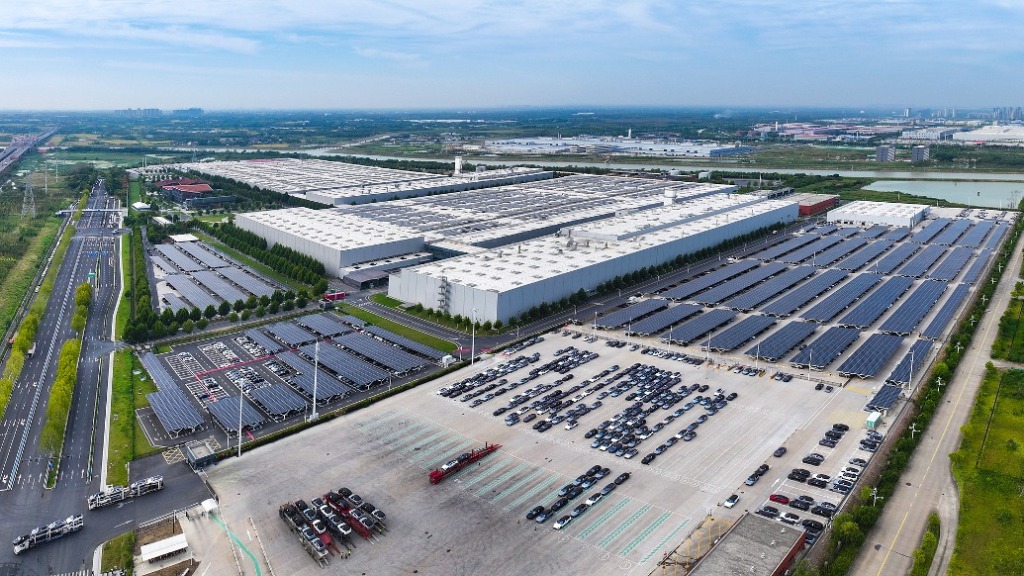
The China Electric Vehicle Hundred People Forum (2025) was recently held at the Diaoyutai State Guesthouse in Beijing. This industry event, which brought together many government officials, experts and scholars, and senior executives of auto companies, was like a "spotlight" on the development of the auto industry, outlining a new blueprint for the auto industry. However, auto companies, which are in a huge transformation period of intelligence and electrification, are just as He Xiaopeng, the founder of Xiaopeng Motors, joked, "No one dares to say that they are sitting firmly on the Diaoyutai."
Wei, Xiaopeng and Li Auto reunite, new forces rise and fall in the past decade
In the corridor of the forum venue of Diaoyutai State Guesthouse, Li Bin took out his Nio mobile phone and skillfully called Li Xiang and He Xiaopeng: "Come, charge it!" The camera froze. Li Bin's smiling eyes squeezed out fatigue, He Xiaopeng's stretched brows revealed spring breeze, and Li Xiang's slightly fat cheeks looked calm and relaxed. This is like the division of the fate of the three people - Weilai's 2025 life-and-death battle, Xiaopeng's "flying" ambition after the initial success of the reform, and the ideal philosophical open source. This is the fourth time they have appeared in the same frame since "recalling the bitterness and thinking about change" in 2020, but it is also the time with the most distinct path differences.

"If 500 more battery swap stations are built in 2022, user satisfaction will be better." Li Bin admitted at the forum that NIO's biggest "tuition fee" was underestimating the effect of the battery swap network on sales. The Yangtze River Delta region contributed 60% of NIO's sales, which is due to the dense layout of battery swap stations. Despite holding 41.9 billion yuan in cash reserves, he still needs to walk a tightrope between research and development (investing 13 billion yuan in 2024), battery swap network expansion and cost reduction and efficiency improvement - he must deliver the ET9 priced at 800,000 yuan to impact the high-end market, and rely on Ledao and the upcoming Firefly brand to compete for the mass market.
"Li Bin is repeating his studies, and so am I. No car company dares to say that it is sitting on the Diaoyutai." Behind He Xiaopeng's ridicule is Xiaopeng's Jedi counterattack: the 2025 G6 reversed its reputation with 5,000 orders in 7 minutes, and its gross profit margin jumped from -1.6% to 14.3%. But he prefers to talk about flying cars. 3 billion yuan was invested in the research and development of split aircraft, trying to shape "low-altitude travel" into a new growth pole. This "technical geek" personality is both an anxiety about the dilution of the smart driving label and a new narrative for the capital market.
"Opening up StarRing OS is to build an innovation community for the industry." Li Xiang no longer talks about "daddy cars", but instead uses the 112.8 billion yuan in cash reserves as a backing to push Ideal to the role of "technology platform exporter". Behind this transformation is the reflection after the failure of MEGA. When pure electric vehicles encounter range anxiety, open source systems may be able to leverage the ecological discourse power. However, from "most like Jobs" to "philosopher", whether his idealism can penetrate industry barriers remains unknown.
Lei Jun's participation has added a different color to the "competition" of this new force. Lei Jun believes that technology is the key to the advancement of domestic cars to high-end. When Lei Jun was recording the release of the Horizon 560TOPS computing chip, the track data of Xiaomi SU7 Ultra had already circulated in the industry. This "catfish" in the mobile phone industry is trying to replicate the subversive logic of the mobile phone market by entering the market with "cost-effective smart driving". The exploration and breakthroughs of these new force representatives in technology research and development, product layout, etc. have not only changed their own destiny, but also promoted the entire new energy vehicle industry to move towards intelligence and high-end.
The evolution of auto companies' exports: from "trade overseas" to "ecological overseas"
At this forum, international cooperation and "industry going overseas" became hot topics. In recent years, Chinese new energy vehicle companies have made frequent moves in overseas markets, and the export data is very impressive. From January to February 2025, my country exported 911,000 vehicles, a year-on-year increase of 10.9%, of which 282,000 new energy vehicles were exported, a year-on-year increase of 54.5%. The overseas journey of Chinese auto companies is moving from the early single trade model to a new stage of building factories overseas, joint ventures, and reverse technology exports.
Changan Automobile announced that it will enter key overseas markets such as Europe, and will rapidly expand into markets such as Southeast Asia, Central and South America, the Middle East, and Africa. It plans to achieve overseas sales of 1 million vehicles by 2025.
Lantu Auto, a subsidiary of Dongfeng Group, will focus on the Middle East market on the basis of deepening its presence in the European market in 2025, and verify the global competitiveness of Chinese brands through the high-end market in the Middle East.
Chinese automakers are not only expanding their export scale, but are also accelerating their overseas localization plant construction. Many automakers have proposed new plans to "export production capacity overseas" by establishing local production bases to better integrate into the local market and reduce costs and compliance risks. For example, BYD invested 32 billion baht (about 6 billion yuan) to build a production base in Thailand, which will become the first electric vehicle factory in the ASEAN region with an annual production capacity of 150,000 vehicles; Great Wall Motors, MG, Changan and GAC are also continuing to expand their business in Thailand.
Lu Fang, CEO of Lantu Auto, said that Chinese automakers are moving from "exporting complete vehicles overseas" to "exporting technology overseas" to form technological cooperation and competitive advantages; from "exporting trade overseas" to "exporting ecosystems overseas", accelerating the layout and construction of factories overseas to jointly build an overseas ecosystem.
Zhang Yongwei, vice chairman and secretary general of the China Electric Vehicle 100 Forum, pointed out that Chinese automakers' participation in global automobile development is shifting from mainly selling cars through trade to closely integrating manufacturing with the international market and exploring localized development strategies. This trend is becoming increasingly obvious.
To help Chinese car companies expand overseas, the China Electric Vehicle 100 Forum is building the "China Automobile Industry Overseas Comprehensive Service Platform" (CARPRO). Through localized services, research services, coordination services and other means, it will help Chinese car companies take root in overseas markets and achieve the transition from "going out" to "integrating in".
Top-level design and reorganization of central enterprises to promote high-quality development of the industry
During the critical period of transformation in the automobile industry, top-level design and restructuring of central enterprises have become the focus of industry attention.
Su Bo, former vice minister of the Ministry of Industry and Information Technology, pointed out that my country's new energy vehicles have entered a new stage of comprehensive market-oriented development driven by demand, and the oil-electric conversion has entered a major turning point. The reconstruction of the automotive industry ecosystem is imminent. The existing fuel vehicle production capacity is at least 30 million vehicles, while the more than 20 million new energy vehicle production capacity that has been built is mostly newly built. The oil-electric conversion has only absorbed a small amount of fuel vehicle production capacity. The current production and sales volume and profit rate of fuel vehicles have dropped sharply, and some companies have closed down. He suggested that the government departments in charge should study and formulate relevant policies as soon as possible to promote the electrification transformation of fuel vehicle companies, support the new capacity of new energy vehicles, and mainly integrate fuel vehicle companies through mergers and reorganizations to reduce resource waste.
The relevant person in charge of the State-owned Assets Supervision and Administration Commission of the State Council said that the next step will be to carry out a strategic reorganization of the central enterprises in the whole vehicle industry, improve the concentration of the industry, and build a world-class automobile group with global competitiveness, independent core technology, and leadership in the intelligent network transformation. By integrating the R&D, manufacturing, and market resources of the central enterprises, the automobile industry will be promoted to achieve new breakthroughs in the field of intelligent electric vehicles. At the same time, the State-owned Assets Supervision and Administration Commission of the State Council has also launched and implemented the action plan for the renewal of the central enterprises' industries and the layout and development of new energy vehicles, taking the whole vehicle products as the breakthrough point and core carrier, and making efforts to layout key areas such as power batteries, automotive chips, and intelligent driving systems, improve the layout of the industrial chain, and enhance the overall competitiveness of the industry.
Technological breakthroughs and industrial upgrading in the field of smart electric vehicles cannot be separated from policy guidance and support. The China Electric Vehicle 100 Forum closely follows the direction of national policies, studies industry difficulties and hot issues, provides references for relevant government departments and industry participants, and promotes changes in the automotive industry.
In terms of intelligent driving, although the industry is developing rapidly, it also faces issues such as the safety and reliability of large models, laws and regulations, etc. It requires collaboration among governments, enterprises, scientific research institutions, etc. to formulate standards and norms and promote the safe and orderly development of technology.
Standing at the critical node of 2025, China's new energy vehicle industry is standing at a new starting point for development, driven by the innovative leadership of new forces, the active expansion of automobile companies' exports and industrial restructuring.


